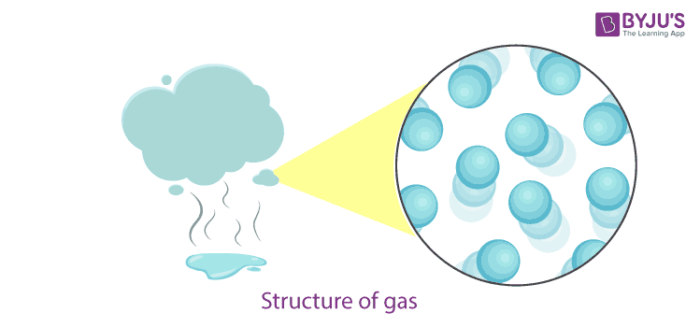- Home/
- CDS & Defence/
- Article
Why does gases exert pressure?
By BYJU'S Exam Prep
Updated on: September 25th, 2023
The random motion of particles in a gas causes the pressure it exerts. Gases have weak intermolecular interactions, and the particles are in a constant state of random motion, colliding with the container’s walls. A matter can be located in one of three states.
Table of content
Three States of Matter
Solid
- Particles are compact or densely packed in solids.
- Since the spaces between the particles are so small, compression is difficult.
- The volume and shape of a solid are fixed.
- Solid particles can only vibrate about their mean location and cannot move because of its hard nature.
- There is a strong force of attraction between particles.
- In solids, the rate of diffusion is incredibly low.
- Solids include things like rock, sugar, ice, wood, and so forth.
Liquid
- Particles are less closely packed in liquids than they are in solids.
- When maintained in a container, liquids adopt that shape.
- Since there is less room for movement between particles in liquids, compression is challenging.
- Although liquids have a fixed volume, their shapes are not.
- Compared to solids, liquids have a higher rate of diffusion.
- Particles exhibit a weaker force of attraction than solids.
- Water, milk, blood, coffee, and other liquids are examples of states of matter.
Gas
- Particles in gases are separated greatly from one another.
- The particles have almost no force of attraction and can move about freely.
- Neither the volume nor the shape of a gas is fixed.
- Among solids and liquids, the gaseous state can be compressed the most.
- Diffusion occurs at a faster rate than solids and liquids.
- Compared to solids and liquids, particles have higher kinetic energy.
- Air, helium, nitrogen, oxygen, carbon dioxide, and other gases are examples of gases.
Structure of Gases
- Since gases have the weakest intermolecular force of attraction, their particles move randomly and collide with one another as well as the container walls.
- Below is a diagram of a gas’s structure:

- These encounters with the container walls suggest that gases are under pressure.
- The figure below illustrates how applying pressure to a gas compresses it:
Summary:
Why does gases exert pressure?
The pressure a gas exerts is the result of the random movement of its particles. Weak intermolecular interactions in gases cause the particles to move randomly and collide with the container walls all the time.
